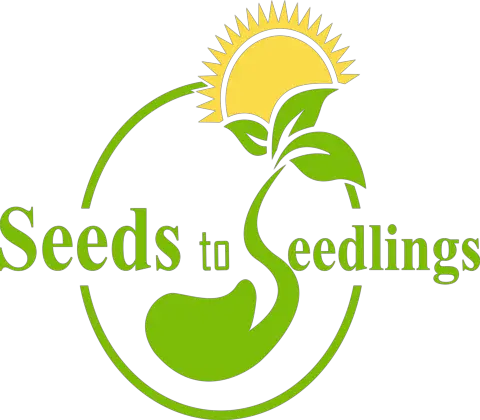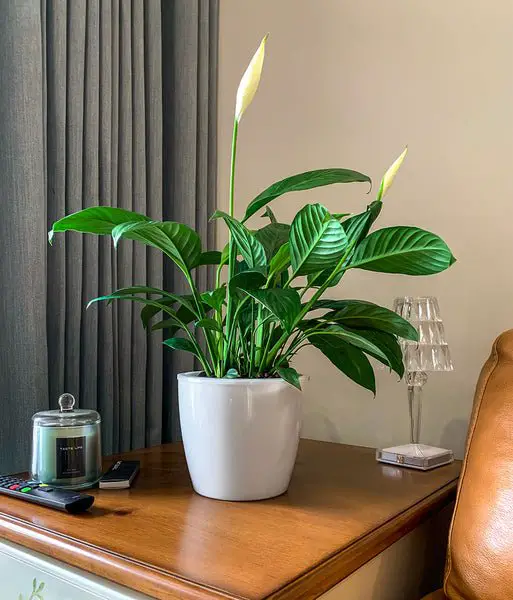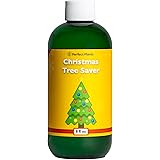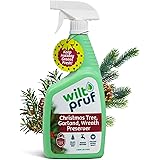Welcome, plant parent! Are your beloved indoor plants looking a little…droopy? Or perhaps they’re sporting a concerning shade of yellow? Chances are, the culprit could be your watering habits. Watering seems simple, but it’s often the biggest challenge for indoor gardeners. Overwatering and underwatering are common plant killers, and finding the right balance is crucial for a thriving indoor jungle.
This comprehensive guide, updated for 2025, dives deep into the five essential watering tips you absolutely need to know to keep your houseplants happy, healthy, and vibrant. We’ll cover everything from understanding different plant needs to using the right watering techniques, all while keeping sustainability and current trends in mind.
In 2025, sustainable gardening and conscious consumerism are more important than ever. We’ll also touch upon eco-friendly watering practices and resources to help you minimize your environmental impact.
Let’s get started on your journey to becoming a watering wizard!
1. Understand Your Plant’s Specific Watering Needs
The first, and arguably most crucial, step to mastering plant watering is understanding that *one size does NOT fit all*. Each plant species has unique requirements based on its origin, leaf structure, growth rate, and the environment you provide. Treating all your plants the same way is a surefire recipe for disaster.
1.1. Research is Key: Know Your Species
Before you even think about reaching for the watering can, do your research! Identify the specific species of each plant in your care. A quick Google search using the plant’s common or scientific name will provide invaluable information. Look for details about the plant’s native habitat – a desert cactus, for instance, will require dramatically different watering than a tropical fern.

indoor plant care
Here’s what to look for:
- Origin: Plants from arid regions (like succulents and cacti) generally need less frequent watering than those from humid rainforests.
- Leaf Structure: Plants with thick, waxy leaves (like snake plants) are better at retaining moisture and require less watering than those with thin, delicate leaves (like ferns).
- Growth Rate: Fast-growing plants typically need more water than slow-growing ones.
- Dormancy: Some plants have a dormant period during the winter when their growth slows down, and they require significantly less water.
Consider these examples:
- Succulents (e.g., Echeveria, Aloe): Native to arid regions, these plants store water in their leaves and stems. They prefer infrequent but thorough watering, allowing the soil to dry out completely between waterings. Overwatering is a common killer of succulents.
- Tropical Plants (e.g., Monstera, Calathea): These plants originate from humid environments and prefer consistently moist soil. However, “moist” doesn’t mean soggy! They need well-draining soil to prevent root rot.
- Ferns (e.g., Boston Fern, Maidenhair Fern): These plants thrive in consistently moist conditions and high humidity. They often require more frequent watering than other houseplants and may benefit from regular misting.
- Snake Plants (Sansevieria): Extremely drought-tolerant, these plants can tolerate long periods without water. Overwatering is a major risk, so allow the soil to dry out completely between waterings.
Real-World Example: Sarah bought a beautiful Monstera deliciosa and a cute little succulent, an Echeveria. Following the “water all plants once a week” rule she heard from a friend, she diligently watered both plants every Sunday. The Monstera thrived, sending out new leaves. The Echeveria, however, started to turn mushy and brown. Sarah realized her mistake – the succulent was being overwatered! After adjusting her watering schedule, the Echeveria recovered.
1.2. Consider the Environmental Factors in Your Home
Your home’s environment plays a significant role in how quickly your plants dry out. Factors like temperature, humidity, and light levels directly impact the plant’s water needs. You need to adjust your watering schedule based on these factors, not just stick to a rigid routine.
- Temperature: Higher temperatures increase evaporation, meaning plants will dry out faster. In the summer, you’ll likely need to water more frequently than in the winter.
- Humidity: Low humidity (common in centrally heated homes) can cause plants to lose moisture quickly. Consider using a humidifier or grouping plants together to increase humidity levels. Alternatively, place plants on pebble trays filled with water, ensuring the pot isn’t sitting directly in the water.
- Light Levels: Plants in bright, sunny locations will generally need more water than those in shady spots, as they photosynthesize more actively.
- Air Circulation: Good air circulation helps prevent fungal diseases but can also dry out the soil more quickly.
Table: Impact of Environmental Factors on Watering Frequency
| Environmental Factor | Impact on Watering Frequency | Example |
|---|---|---|
| High Temperature | Increased frequency | Watering a plant twice a week in summer vs. once a week in winter. |
| Low Humidity | Increased frequency | Watering a fern every other day in a dry room vs. every 3 days in a humid room. |
| Bright Light | Increased frequency | Watering a succulent once every 2 weeks in a sunny window vs. once a month in a shaded area. |
| Good Air Circulation | Increased frequency | Watering a plant every 4 days in a well-ventilated room vs. every 5 days in a stagnant room. |
1.3. Don’t Rely on Schedules: Observe Your Plants
Throw out the notion of a rigid watering schedule! While a schedule can be a helpful starting point, it should never be the sole basis for your watering decisions. Instead, learn to observe your plants and understand their visual cues. Your plants will tell you when they need water if you pay attention.
Signs that a plant needs water:
- Drooping Leaves: This is often the most obvious sign. However, drooping can also indicate overwatering, so check the soil moisture before watering.
- Dry Soil: This is the most reliable indicator. Stick your finger about an inch or two into the soil (or further for larger pots). If the soil feels dry, it’s time to water.
- Lightweight Pot: When the soil is dry, the pot will feel significantly lighter.
- Curling or Crispy Leaf Edges: This can indicate underwatering, especially when combined with dry soil.
- Slowed Growth: While not always a direct indicator of underwatering, consistently dry soil can stunt a plant’s growth.
Real-World Example: Mark had a ZZ plant (Zamioculcas zamiifolia), known for its drought tolerance. He watered it every two weeks religiously. One day, he noticed the leaves were starting to yellow. Instead of automatically watering, he checked the soil – it was still damp! He realized he was overwatering the plant, even with the infrequent schedule. He reduced the watering frequency to once a month, and the ZZ plant recovered.
2. Master the “Touch Test” and Other Soil Moisture Indicators
As mentioned above, the “touch test” is a simple yet effective way to gauge soil moisture. But it’s not the only tool in your arsenal. Combining the touch test with other indicators will give you a more accurate assessment of your plant’s watering needs.
2.1. The Finger Test: Getting Your Hands Dirty
The finger test is exactly what it sounds like: sticking your finger into the soil to feel for moisture. For small pots, insert your finger about an inch deep. For larger pots, go deeper – at least 2-3 inches. Assess the soil’s moisture level:
- Dry: The soil feels dry and crumbly to the touch. It may even feel warm.
- Slightly Moist: The soil feels slightly damp but not soggy. It should cling together slightly when squeezed.
- Moist: The soil feels damp and cool to the touch. It should clump together easily when squeezed.
- Soggy: The soil feels waterlogged and muddy. Water may pool on the surface. This is a sign of overwatering.
Important Note: Be sure to wash your hands thoroughly before and after performing the finger test to prevent the spread of diseases.
2.2. Using a Moisture Meter: The Tech-Savvy Approach
For those who prefer a more precise method, a moisture meter can be a valuable tool. These devices use a probe to measure the moisture content of the soil. Moisture meters are readily available online and at garden centers.
Here’s how to use a moisture meter:
- Insert the probe into the soil near the base of the plant.
- Ensure the probe is inserted deeply enough to get an accurate reading.
- Read the moisture level indicated on the meter’s scale. Most meters have a scale ranging from dry to wet.
- Refer to your plant’s specific needs to determine the appropriate moisture level.
Pros of using a moisture meter:
- Provides a more objective measurement of soil moisture.
- Helpful for beginners who are unsure about interpreting the finger test.
- Can be used to check moisture levels at different depths in the pot.
Cons of using a moisture meter:
- Can be inaccurate if not used correctly.
- Some cheaper models may be unreliable.
- Doesn’t replace the need to observe your plant’s visual cues.
2.3. The “Lift Test”: Gauging Weight
As mentioned previously, a pot full of dry soil will be significantly lighter than a pot full of wet soil. Regularly lifting your plants can help you develop a sense of how heavy they feel when they’re adequately watered. This test works best when you have experience with the plant and know what its weight is like when properly hydrated.
To perform the lift test:
- Carefully lift the pot.
- Compare the weight to how it feels when you know the plant has been recently watered.
- If the pot feels significantly lighter, it’s likely time to water.
Real-World Example: David struggled to consistently water his large fiddle-leaf fig. He purchased a moisture meter, but found he forgot to use it. Then he started lifting the pot every few days. He quickly learned the difference in weight between a well-watered fig and one that was thirsty. He now relies primarily on the lift test and only uses the moisture meter occasionally to double-check.
2.4. Observe the Soil Surface
While not a foolproof method, observing the soil surface can provide clues about moisture levels. Cracked, dry soil is a clear indication that the plant needs water. Conversely, a constantly damp or green (due to algae growth) surface can indicate overwatering or poor drainage.
2.5. Consider the Pot Material
The material of your pot affects how quickly the soil dries out. Terracotta pots are porous and allow for greater air circulation, which means the soil will dry out faster. Plastic or glazed ceramic pots retain moisture for longer.
- Terracotta: Ideal for plants that prefer to dry out between waterings, such as succulents and cacti.
- Plastic/Glazed Ceramic: Suitable for plants that prefer consistently moist soil, such as ferns and tropical plants.
Table: Soil Moisture Indicators
| Indicator | Description | Interpretation |
|---|---|---|
| Finger Test | Feeling the soil moisture with your finger. | Dry: Time to water. Slightly Moist: Check again in a few days. Moist: No need to water. Soggy: Overwatered. |
| Moisture Meter | Using a device to measure soil moisture. | Refer to the meter’s scale and your plant’s specific needs. |
| Lift Test | Lifting the pot to gauge its weight. | Light pot: Time to water. Heavy pot: No need to water. |
| Soil Surface | Observing the surface of the soil. | Cracked/Dry: Time to water. Damp/Green: Potentially overwatered. |
3. Choose the Right Watering Technique for Each Plant
The “how” you water your plants is just as important as “when” you water them. Different watering techniques are suited for different plants and situations. Choosing the wrong technique can lead to overwatering, underwatering, or other problems.
3.1. Top Watering: The Classic Approach
Top watering is the most common and straightforward method. It involves pouring water directly onto the soil surface until water drains out of the drainage holes at the bottom of the pot.
Benefits of Top Watering:
- Easy and convenient.
- Helps flush out excess salts and minerals that can accumulate in the soil.
- Ensures the entire root system is moistened.
Drawbacks of Top Watering:
- Can lead to waterlogging if the soil doesn’t drain well.
- Can splash soil onto the leaves, increasing the risk of fungal diseases.
- May not be suitable for plants with delicate foliage or those prone to fungal diseases.
Best Practices for Top Watering:
- Water slowly and evenly, allowing the water to soak into the soil.
- Avoid pouring water directly onto the leaves, especially if the plant is susceptible to fungal diseases.
- Water until water drains out of the drainage holes.
- Discard any excess water that collects in the saucer beneath the pot.
3.2. Bottom Watering: A Gentle Alternative
Bottom watering involves placing the pot in a tray or basin filled with water. The water is then absorbed upwards through the drainage holes, moistening the soil from the bottom up.
Benefits of Bottom Watering:
- Encourages roots to grow downwards in search of water, leading to a stronger root system.
- Reduces the risk of overwatering and fungal diseases.
- Prevents soil compaction.
Drawbacks of Bottom Watering:
- Can be time-consuming.
- May not be suitable for plants that prefer to dry out quickly.
- Can lead to a buildup of salts and minerals on the soil surface.
Best Practices for Bottom Watering:
- Fill a tray or basin with about 1-2 inches of water.
- Place the pot in the water and allow it to soak for about 15-30 minutes.
- Remove the pot from the water and allow any excess water to drain.
- Repeat when the soil is dry to the touch.
3.3. Misting: Increasing Humidity
Misting involves spraying the leaves of a plant with water using a spray bottle. Misting is primarily used to increase humidity levels around the plant, rather than to water the soil directly. While misting is often recommended, its effectiveness can be debated, and it should be used judiciously.
Benefits of Misting:
- Increases humidity levels, which can benefit plants that prefer humid environments.
- Helps remove dust from the leaves.
- Can be a refreshing treat for plants, especially during hot, dry weather.
Drawbacks of Misting:
- The effect is temporary; humidity levels return to normal quickly.
- Can promote fungal diseases if the leaves remain wet for extended periods.
- May leave unsightly water spots on the leaves, especially if using hard water.
Best Practices for Misting:
- Mist in the morning so the leaves have time to dry before nightfall.
- Use distilled or filtered water to avoid water spots.
- Mist lightly and evenly, avoiding excessive saturation.
- Ensure good air circulation to help the leaves dry quickly.
3.4. Self-Watering Pots: The Convenient Option
Self-watering pots are designed to provide a consistent supply of water to plants. They typically consist of two parts: an inner pot that holds the plant and an outer reservoir that holds water. A wicking system draws water from the reservoir up into the soil.
Benefits of Self-Watering Pots:
- Reduces the need for frequent watering.
- Provides a consistent supply of moisture to the roots.
- Can be helpful for busy plant owners or those who tend to underwater.
Drawbacks of Self-Watering Pots:
- Can lead to overwatering if not used correctly.
- Not suitable for all plants, especially those that prefer to dry out between waterings.
- Can be more expensive than traditional pots.
Best Practices for Using Self-Watering Pots:
- Choose a self-watering pot that is appropriately sized for your plant.
- Use a well-draining potting mix.
- Fill the reservoir with water when it is empty.
- Allow the soil to dry out slightly between refills.
- Monitor the plant closely for signs of overwatering or underwatering.
Table: Watering Techniques and Their Suitability
| Technique | Description | Best Suited For | Cautions |
|---|---|---|---|
| Top Watering | Pouring water onto the soil surface. | Most plants, especially those that benefit from flushing out salts. | Avoid overwatering, ensure good drainage, and avoid wetting the leaves. |
| Bottom Watering | Placing the pot in a tray of water. | Plants that prefer consistently moist soil and those with delicate foliage. | Can lead to salt buildup, not suitable for plants that prefer to dry out. |
| Misting | Spraying the leaves with water. | Plants that prefer high humidity. | Temporary effect, can promote fungal diseases, may leave water spots. |
| Self-Watering Pots | Using a pot with a water reservoir and wicking system. | Busy plant owners, plants that prefer consistent moisture. | Can lead to overwatering, not suitable for all plants. |
3.5. Special Considerations for Specific Plants
Some plants need very specific watering techniques. For example:
- Orchids: Many orchids are epiphytes, meaning they grow on other plants and don’t need to be planted in soil. They should be watered by soaking the roots for a few minutes and then allowing them to drain completely.
- Air Plants: These plants don’t have roots and absorb moisture from the air. They should be misted regularly or soaked in water for 20-30 minutes every week or two.
- African Violets: These plants are sensitive to water on their leaves, which can cause spotting. They should be watered from the bottom or by carefully pouring water into the soil without wetting the leaves.
4. Use the Right Type of Water
Believe it or not, the type of water you use can significantly impact your plant’s health. Tap water contains chemicals and minerals that can be harmful to some plants. Choosing the right type of water can make a big difference.
4.1. Tap Water: The Convenient but Potentially Problematic Option
Tap water is the most convenient option for watering plants, but it’s not always the best choice. Tap water often contains chlorine, chloramine, fluoride, and other minerals that can be harmful to sensitive plants.
Potential Problems with Tap Water:
- Chlorine/Chloramine: These disinfectants can kill beneficial bacteria in the soil, disrupting the plant’s ecosystem.
- Fluoride: Fluoride can be toxic to some plants, causing leaf tip burn and other problems.
- Hard Water: Hard water contains high levels of calcium and magnesium, which can build up in the soil and make it alkaline. This can interfere with the plant’s ability to absorb nutrients.
How to Mitigate the Risks of Tap Water:
- Let it Sit: Allow tap water to sit in an open container for 24-48 hours before using it. This will allow some of the chlorine to evaporate. However, chloramine does not evaporate and requires filtration for removal.
- Use a Water Filter: A water filter can remove chlorine, chloramine, and other harmful substances from tap water.
- Test Your Water: Test your tap water to determine its pH and mineral content. This will help you determine if it’s suitable for your plants.
4.2. Rainwater: Nature’s Gift
Rainwater is the ideal water source for plants. It is naturally soft, free of chemicals, and slightly acidic, which is beneficial for many plants. Collecting rainwater is also an environmentally friendly practice.
Benefits of Rainwater:
- Naturally soft and free of chemicals.
- Slightly acidic pH is ideal for many plants.
- Environmentally friendly.
How to Collect Rainwater:
- Set up a rain barrel or other container to collect rainwater from your roof.
- Ensure the container is clean and free of contaminants.
- Filter the rainwater before using it to remove any debris.
4.3. Distilled Water: The Purest Option
Distilled water is water that has been boiled and then condensed back into liquid form. This process removes all impurities, including minerals and chemicals. Distilled water is a good option for plants that are particularly sensitive to tap water.
Benefits of Distilled Water:

watering guide
- Completely free of chemicals and minerals.
- Safe for all plants.
Drawbacks of Distilled Water:
- Can be expensive to purchase.
- Lacks the beneficial minerals that some plants need. (Consider adding a diluted fertilizer).
4.4. Filtered Water: A Convenient Compromise
Filtered water, such as that from a Brita or PUR filter, can remove some of the harmful chemicals and minerals from tap water, making it a better option for plants. However, not all filters are created equal. Make sure the filter you use is effective at removing chlorine and chloramine.
Benefits of Filtered Water:
- Removes some harmful chemicals and minerals from tap water.
- More convenient than collecting rainwater or purchasing distilled water.
Drawbacks of Filtered Water:
- Not as pure as rainwater or distilled water.
- Filters need to be replaced regularly.
Table: Water Types and Their Suitability
| Water Type | Description | Pros | Cons |
|---|---|---|---|
| Tap Water | Water from your faucet. | Convenient and readily available. | May contain harmful chemicals and minerals. |
| Rainwater | Water collected from rainfall. | Naturally soft, free of chemicals, and slightly acidic. | May be difficult to collect, can be contaminated. |
| Distilled Water | Water that has been boiled and condensed. | Completely free of chemicals and minerals. | Can be expensive, lacks beneficial minerals. |
| Filtered Water | Water that has been run through a filter. | Removes some harmful chemicals and minerals. | Not as pure as rainwater or distilled water, filters need replacing. |
4.5. Water Temperature Matters
Always use water that is at room temperature. Extremely cold or hot water can shock the plant’s root system.
5. Adapt Your Watering Habits Seasonally
As mentioned in earlier points, plant watering needs will vary throughout the year. Changes in temperature, humidity, and light levels all impact how much water your plants require. Adapting your watering routine to the seasons is crucial for maintaining their health.
5.1. Spring: Awakening and Growth
In the spring, plants begin to emerge from their winter dormancy and resume active growth. As the days get longer and warmer, plants will need more water to support their new growth.
Watering Tips for Spring:
- Increase watering frequency as needed.
- Monitor plants closely for signs of new growth and adjust watering accordingly.
- Fertilize plants to provide them with the nutrients they need for growth.
Read More: How Often To Fertilize Aquarium Plants: Essential Care Tips
5.2. Summer: Peak Growing Season
Summer is the peak growing season for most plants. High temperatures and increased sunlight mean plants will need more water than at any other time of year.
Watering Tips for Summer:
- Water plants more frequently, especially during heat waves.
- Water in the morning or evening to avoid evaporation.
- Consider using a humidifier or grouping plants together to increase humidity.
5.3. Autumn: Preparing for Dormancy
As the days get shorter and cooler in the autumn, plant growth slows down. Plants will need less water as they prepare for their winter dormancy.
Watering Tips for Autumn:
- Reduce watering frequency gradually.
- Avoid fertilizing plants in the autumn, as this can encourage new growth that is vulnerable to cold temperatures.
5.4. Winter: Dormancy and Rest
Winter is the dormant period for many plants. Growth is minimal, and plants require very little water. Overwatering is a common problem in the winter, as plants are not actively using water.
Watering Tips for Winter:
- Water plants sparingly, only when the soil is completely dry.
- Avoid fertilizing plants in the winter.
- Maintain adequate humidity by using a humidifier or grouping plants together.
- Be particularly cautious with plants near radiators or heating vents, as they will dry out faster.
Table: Seasonal Watering Adjustments
| Season | Light Levels | Temperature | Watering Frequency | Other Tips |
|---|---|---|---|---|
| Spring | Increasing | Rising | Increase as needed | Fertilize, monitor for new growth |
| Summer | High | High | More frequent | Water in morning/evening, increase humidity |
| Autumn | Decreasing | Falling | Reduce gradually | Avoid fertilizing |
| Winter | Low | Cool | Sparingly | Maintain humidity, avoid fertilizing |
5.5. Adjust for Day Length
Even within a season, day length will affect the amount of water your plants need. Longer days mean more photosynthesis and, therefore, more water usage.

houseplant hydration
Bonus Tip: Consider Sustainable Watering Practices
In 2025, it’s important to be mindful of our environmental impact. Here are some sustainable watering practices you can incorporate into your plant care routine:
- Collect and Reuse Water: Save water from cooking (after it has cooled) or use the water you rinse your vegetables with to water your plants. Just be sure the water is free of salt or oil.
- Use Water-Wise Plants: Choose plants that are drought-tolerant and require less frequent watering. Succulents, snake plants, and ZZ plants are great options.
- Water Deeply and Less Frequently: Encourage deep root growth by watering thoroughly but less often.
- Mulch the Soil Surface: Mulch helps retain moisture in the soil, reducing the need for frequent watering.
- Use a Watering Can with a Rose Head: A rose head disperses water gently and evenly, preventing soil erosion and water wastage.
Read More: The Fascinating History Of Houseplants: From Ancient Origins To Modern Indoor Gardens
FAQ: Your Burning Watering Questions Answered
Still have questions about watering your indoor plants? Here are some frequently asked questions:
What are the signs of overwatering?
Signs of overwatering include yellowing leaves, drooping leaves (that feel soft and mushy), root rot (smelly, brown roots), and fungus gnats.
What are the signs of underwatering?
Signs of underwatering include wilting leaves, dry and crispy leaf edges, slow growth, and soil that pulls away from the sides of the pot.
How often should I water my succulents?
Succulents prefer to dry out completely between waterings. Water thoroughly when the soil is dry to the touch, usually every 2-4 weeks, depending on the environment.
Can I use tap water for all my plants?
While convenient, tap water can contain chemicals harmful to some plants. It’s best to let tap water sit for 24-48 hours to allow chlorine to evaporate, or use filtered, rainwater, or distilled water, especially for sensitive plants like Calatheas.
Is it better to water in the morning or evening?
Watering in the morning is generally preferred as it allows the leaves to dry out during the day, reducing the risk of fungal diseases. However, watering in the evening is fine if you ensure good air circulation.
How much water should I give each plant?
Water until water drains out of the drainage holes at the bottom of the pot. This ensures the entire root system is moistened. Discard any excess water that collects in the saucer.
What is root rot, and how do I prevent it?
Root rot is a fungal disease that occurs when plant roots are constantly wet. Prevent root rot by using well-draining soil, choosing pots with drainage holes, and avoiding overwatering. If you suspect root rot, repot the plant in fresh soil after trimming away any affected roots.
Why are my plant’s leaves turning yellow?
Yellowing leaves can be caused by overwatering, underwatering, nutrient deficiencies, or pests. Check the soil moisture and consider other factors to determine the cause.
How do I know if my plant needs more humidity?
Signs that a plant needs more humidity include brown leaf tips, crispy edges, and slow growth. Increase humidity by using a humidifier, grouping plants together, or placing plants on pebble trays filled with water.
Conclusion: Mastering the Art of Watering for Thriving Indoor Plants
Watering your indoor plants may seem simple, but it’s a skill that requires attention, patience, and a deep understanding of each plant’s unique needs. By following the five essential tips outlined in this guide—understanding your plant’s specific requirements, mastering soil moisture checks, choosing the right watering technique, using the best water type, and adapting to seasonal changes—you’ll be well on your way to cultivating a lush, healthy indoor jungle.
Remember, overwatering is the #1 killer of houseplants, but underwatering can be just as damaging. The key is balance. Pay attention to your plants’ signals, adjust your care routine as needed, and don’t be afraid to experiment to find what works best for your green companions.
In 2025, sustainability in plant care is more important than ever. Simple practices like collecting rainwater, reusing household water, and choosing drought-tolerant plants can make a big difference in reducing waste while keeping your plants happy.
Whether you’re a beginner or a seasoned plant parent, observation and consistency are your greatest tools. Keep learning, stay curious, and enjoy the rewarding journey of nurturing your indoor oasis. Happy watering! 🌿💧
Auto Amazon Links: No products found.
Perfect Plants Christmas Tree Saver 8oz. | Easy Use Xmas Tree Preserver Food | Have Healthy Green Christmas Trees All Holiday Season
$7.99 (as of December 26, 2025 06:42 GMT +00:00 - More info- Product prices and availability are accurate as of the date/time indicated and are subject to change. Any price and availability information displayed on [relevant Amazon Site(s), as applicable] at the time of purchase will apply to the purchase of this product.
FirEver Pure Christmas Tree Food | Preserver Additive & Season Extender for Live Xmas Trees | Keep It Green, Reduce Needle-Drop | Miracle Freshness (8 oz)
$9.16 (as of December 26, 2025 06:42 GMT +00:00 - More info- Product prices and availability are accurate as of the date/time indicated and are subject to change. Any price and availability information displayed on [relevant Amazon Site(s), as applicable] at the time of purchase will apply to the purchase of this product.
Wilt-Pruf® Christmas Tree/Cutting Preserver Spray |Preserves Christmas Trees, Wreaths, Garlands, Cuttings and Carved Pumpkins | Reduces Needle Drop | Keeps Cut Trees Fresh Longer | Natural (32 oz)
$21.99 (as of December 26, 2025 06:42 GMT +00:00 - More info- Product prices and availability are accurate as of the date/time indicated and are subject to change. Any price and availability information displayed on [relevant Amazon Site(s), as applicable] at the time of purchase will apply to the purchase of this product.
Transmission Funnel - 3'' Wide 23'' Long Funnel with Hose – Flexible, Reusable, No Leak Design Featuring Elastic Long Hose | Long Funnel for Oil, Gas, Coolant, Automotive and Garage Applications
$7.95 (as of December 26, 2025 06:42 GMT +00:00 - More info- Product prices and availability are accurate as of the date/time indicated and are subject to change. Any price and availability information displayed on [relevant Amazon Site(s), as applicable] at the time of purchase will apply to the purchase of this product.
Rocky Mountain Goods Christmas Tree Food - 8 oz Tree Preservative - Reduce Needle Drop - Greener Scent - Fir, Pine, Spruce Trees - Extend Tree Life
$9.95 (as of December 26, 2025 06:42 GMT +00:00 - More info- Product prices and availability are accurate as of the date/time indicated and are subject to change. Any price and availability information displayed on [relevant Amazon Site(s), as applicable] at the time of purchase will apply to the purchase of this product.






